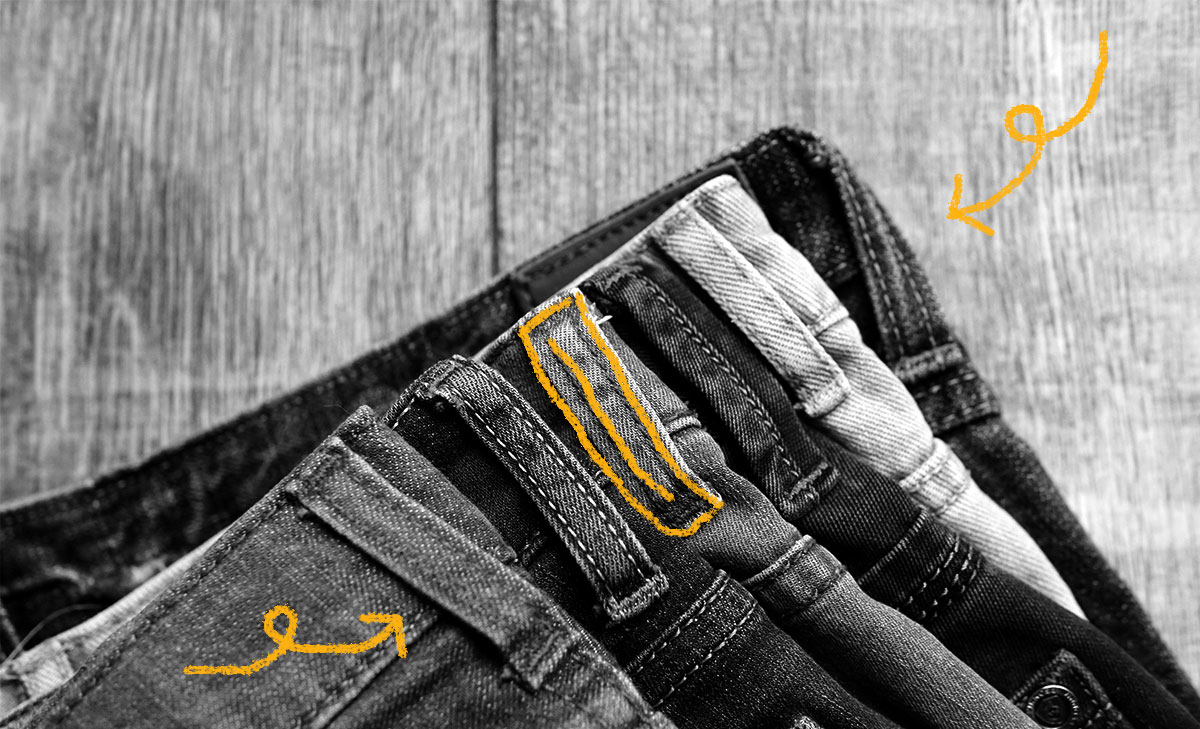Belt loops were introduced by Levi’s when they released their 501 Jean in 1922. Up until the 1920s, belts were considered decorative items and were mostly reserved for military uniforms. However, after World War I, high-end clothing began to feature belts. As the trend caught on among a younger generation of men who had just returned from the war and were starting to enter the workforce, belt loops became necessary. For a while, suspender buttons and the back cinch (the belt loops’ precursor) remained on jeans alongside the belt loops in order to appeal to older gentlemen. However, by 1933 it was common for buyers to have the store employees cut off the belt cinch and suspender buttons before departing with their new purchases. In 1942, the belt finally took over and the Levi’s 501 Jean was released without a back cinch or suspender buttons. The World War II resource crunch helped this along, since the government required manufacturers to remove a certain amount of material from their garments. Today, most jeans and pants feature belt loops, and this staple feature is unlikely to be going away any time soon. However, you can buy a retro-looking pair of pants with a back cinch from select brands!

Your go-to guide for weird history facts
Subscribe to the FREE daily email that makes learning about history fun.


